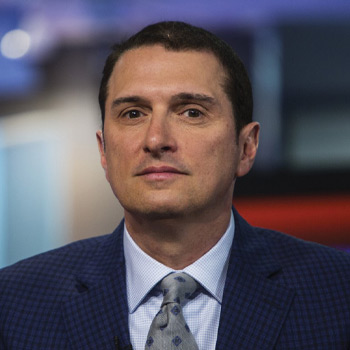West Texas Intermediate rejected the $80 a barrel area on its first try as the market is fearful of the Fed and disappointed with data from the American Petroleum Institute (API), states Phil Flynn of PRICE Futures Group.
The API surprisingly reported that crude supplies increased by 1.319 million barrels. The market expectations were for crude oil supplies to fall. One part of the report that looks very bullish is that now we’re not releasing oil from the Strategic Petroleum Reserve. We’re starting to release oil from the Cushing, OK delivery point at almost a record pace. The API reported that Cushing fell by 2.34 million barrels which was a huge drop considering the size of the overall reserve which according to the Energy Information Administration (EIA) stood at 38.3 million barrels last week. But the market is taking that as a negative as the API reported a smaller-than-expected draw in gasoline supplies and a surprise 1.61-million-barrel increase in distillate supply.
Still, oil has had an impressive run as this bull market has ground its way slowly higher over the last five weeks. The realization is sinking in that US and global oil supplies are tight and there is no room for error. We saw that clearly in the gasoline market where we have been warning not to be complacent on price. Refinery issues, mainly at the Exxon Mobil Baton Rouge cat cracker, and historical high crack spreads which hit the highest level since last March, are going to lead to a retail gas price spike which was almost inevitable. If you keep running the tank on empty, any unplanned issues cause problems.
While price eased on RBOB futures after hitting a nine-month high and the crack spread fell from $42, it’s back on the rise as refiners are going to be pressured to meet global demand that refuses to die despite the Fed's best efforts to slow down economic activity and inflation. In yesterday’s World Economic Outlook from the International Monetary Fund IMF, they raised their 2023 global growth prediction by 0.2 percentage points to 3% which is up from 2.8% in April. That’s stronger than expected growth and the fact that US consumer confidence came in much stronger than expected is going to keep expectations for gasoline demand strong even as prices rise.
The national average for gasoline prices according to Triple-A jumped almost a nickel overnight from 3.636 cents yesterday to $3.687 this morning. I look for another spike tomorrow and it is unlikely that gasoline will fall below $3.50 for the rest of the year. Another refining issue, Marathon at Galveston Bay Texas did restart their hydrotreater which was another reason why we saw upward pressure on gasoline prices.
High oil prices are giving the Kuwaiti economy a boost. According to the AFP, Kuwait recorded its first budget surplus of nine years due to the rising cost of oil. The Gulf Emirate, whose revenue relies highly on hydrocarbons, closed its fiscal balance with a surplus of $21 billion.
The other factor that has to do with energy is the weather. Janice Dean at the Fox News Channel and the Fox Weather Channel warns that “The heat is still the biggest story with another day of extreme temperatures and record highs expanding towards the north and east. Strong to severe storms will threaten the Great Lakes while parts of the Southwest finally get some much-needed monsoonal rain.”
We also need to keep up on the Fox Weather app as the Atlantic is starting to get active with tropical waves. The National Hurricane Center has two storms that they are eyeing but it’s too early to tell how they’re going to develop.
While the $80 a barrel area was tough the first time up, we expect that we will exceed that area before the end of the week. There is some trepidation being too long after crude oil hit the upper Bollinger band and pull back especially going into today’s FOMC meeting. We do not believe the Federal Reserve is going to give us any big surprises so we think oil prices will lock and reload and start to move higher. There is just too much risk of shortages going into the second half of the year for the market to continue to ignore, so we would use any pullback as an opportunity to lock in prices for the second half of the year and into early next year. I suppose you can continue to bet on a recession developing out of nowhere and maybe the Fed can scare the market into believing that’s going to happen but more than likely, what we’re going to continue to see is a market that is just one headline away from a major price spike.
The hot temperatures are going to take their toll on natural gas consumption and that should bode well for the price of natural gas which at this point looks neutral to higher. We have said many times that natural gas is the bridge fuel to the future but if you’re serious about reducing greenhouse gas emissions, it’s time that you tear down the ugly wind turbines and get rid of the toxic solar panel fields and start to embrace nuclear energy.
Oh sure, the climate do-gooders continue to tell us the only way to save the planet is wind and solar but the reality is that those energy sources are not as clean as people would have you believe. Not only do solar panels take away from farmland that cause the cost of food to rise, but the wind turbines also end up in landfills when they have outlived their useful life. The hypocrisy of the green energy movement failing to embrace nuclear energy as a solution to reduce carbon in the atmosphere shows you the hypocrisy of the entire movement. Yet maybe we’re starting to get some movement on that and Europe, which has suffered the brunt of a bad energy policy as it has threatened their economies and their national security, is starting to wake up to the fact that if you want to reduce greenhouse gas emissions you have to embrace nuclear power.
The French Ministry for Energy Transition and OECD Nuclear Energy Agency is going to hold an international conference in Paris called, “Charting the Path of nuclear energy to net zero”. They say “To achieve net zero by 2050, NEA projections show that total nuclear energy capacity will need to triple by 2050. Many countries are moving forward to expand their nuclear energy capacity and, therefore, a nuclear new build has become a top priority in several NEA countries. Most face significant challenges regarding evolving policy, industrial and regulatory contexts.
French Minister for Energy Transition Agnès Pannier-Rancher said: “For the first time, more than 20 OECD NEA countries will convene in Paris, a few weeks before COP28, to send a strong message: nuclear power is essential to achieve carbon neutrality and fight against global warming, and many countries are ready to commit to it, like France, which is reviving its sector with vigor.” NEA Director-General William D. Magwood, IV, said: “Reducing global carbon emissions to achieve net zero by 2050 is one of the greatest challenges and opportunities of our time. NEA analysis shows that advanced nuclear energy, alongside renewables and emerging technologies such as hydrogen, provides a realistic and practical path to meet this goal while maintaining energy security and fostering economic expansion. There is much work ahead and the NEA is pleased to work with the government of France to advance the international collaboration needed to realize this vision.” In the lead-up to COP28, the outcomes of the Paris Roadmaps conference will set the stage for joint, focused action by policymakers, utilities, and the overall private sector.
The market also is looking at biofuels because of the concerns that the supplies coming out of Ukraine and Russia are going to be compromised. The Kremlin says, “It’s impossible to return to the lapse Black Sea grain deal for now UN quote Putin made it clear the deal could be restored if agreements related to Russia are honored. The IMF also said Suspension of the Black Sea deal would increase grain prices by 10-15%.
Learn more about Phil Flynn by visiting Price Futures Group.




















